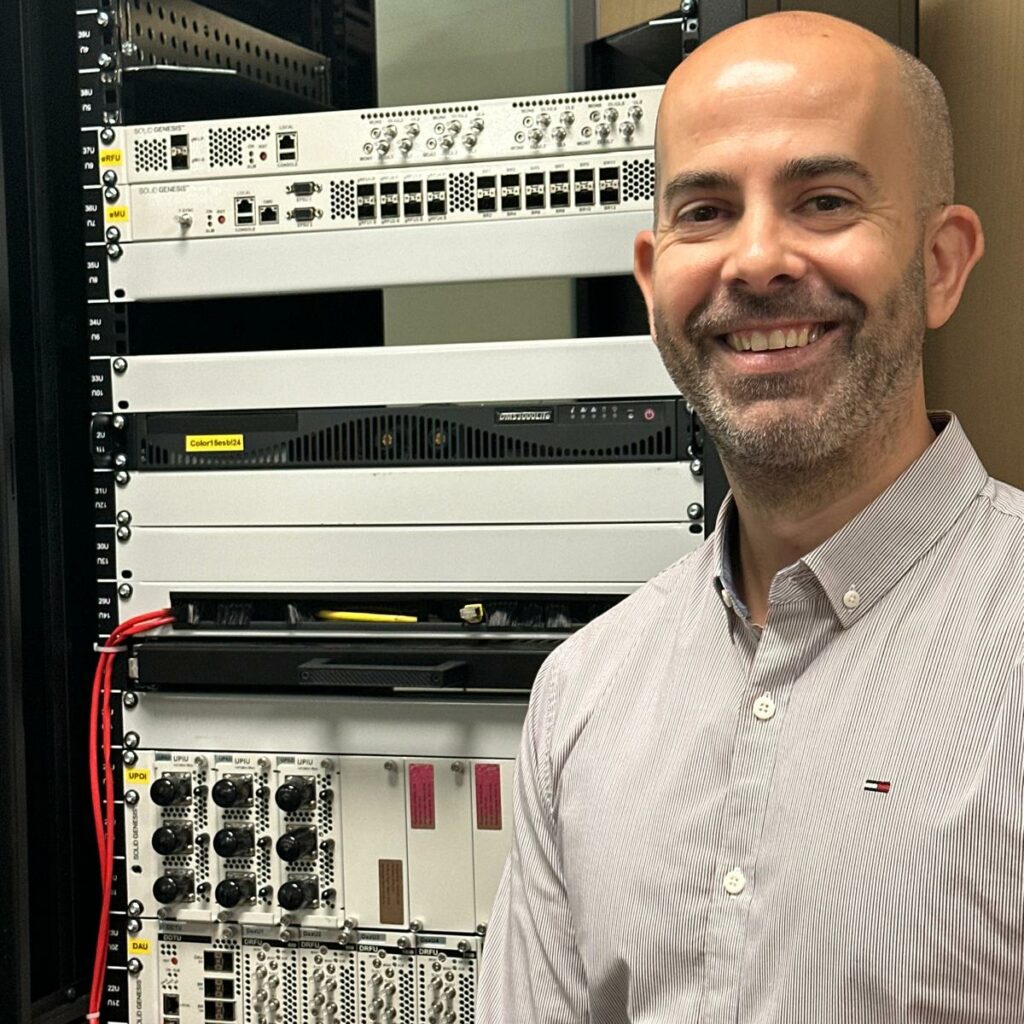Q.- Alejandro, thank you for taking the time for this interview. To begin with, can you tell us a bit about your background in the company and your current role?
A.- Sure, I joined the company a little over 18 years ago. My current job is a mix of technical and commercial support functions, working with clients on project design, budgeting and optimisation, as well as staging, training and commissioning. Over the years, I have worked in the CATV and RFID departments, although I am currently more involved in active DAS solutions.
Q.- Interesting career. Could you explain to us what is meant by active DAS and how important it is in your field of work?
A.- Of course. DAS, or Distributed Antenna System, refers to the infrastructure needed to improve the coverage and capacity of mobile networks. It is especially relevant indoors and in places where user density is high or where communications are critical, such as in road tunnels, metro or high-speed train tunnels, office buildings, airports, stadiums, hospitals or shopping centres. Our goal is to ensure that each of these environments has optimal coverage.
Q.- That sounds essential, what do you think is the added value that your team offers to clients?
A.- Our added value lies in providing our clients with the best possible end-to-end solution, always taking into account the unique needs of each project. Each new project represents a challenge and an opportunity to apply the best technology available, while maintaining a balance between quality and cost control.
Q.- You mentioned that every project is a challenge, could you give us examples of the types of projects you have worked on?
A.- Over the years, we have completed hundreds of projects in the public safety bands, providing coverage in indoor environments such as road tunnels, nuclear power plants, airports, metro systems and high-speed train lines. In recent years, we have expanded our range to include cellular projects in stadiums, subways, shopping malls and office buildings.
Q.- This is certainly a very dynamic area, what are the next steps for your team in this field?
A.- At the moment, our priority is to continue to expand our capabilities to tackle more complex and challenging projects in the telecommunications sector. We are committed to using cutting-edge technologies and to always maintain our customer focus, adapting to the specific needs of our customers.
We thank Alejandro Fuster for sharing his experience and vision on the future of Distributed Antenna Systems. His commitment to innovation and customer service reflects an exemplary approach in a constantly evolving field. Undoubtedly, his career is a testament to the advancement of communication technologies and their impact on our daily lives.
